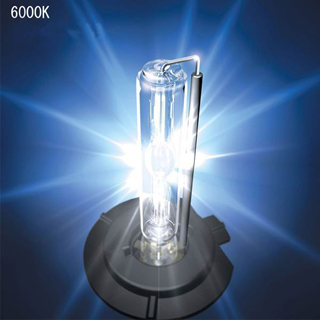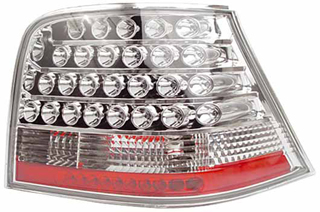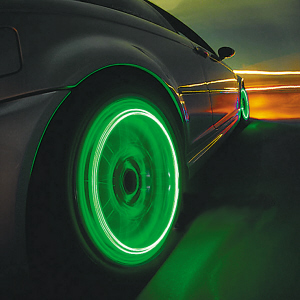HID and LED Lamps Brighten China's Automotive Market
2008/09/24 | By CENSHigh-intensity discharge (HID) and light-emitting diode (LED) lamps have become hot sectors in China's automotive industry, and their future appears bright.
HID headlamps were first introduced on the new E-class Mercedes-Benz sedan in 1995 and have gained popularity ever since. Today, they are favorite items for drivers who want greater illumination or are just chasing the latest fad.

Unlike traditional halogen headlights, HID bulbs contain no filaments but emit bright beams via high-voltage impulses, generated by electronic ballasts, that ignite the gas inside them. A 35-watt HID bulb consumes just half the amount of electricity used by a halogen bulb.
In addition, the color of an HID beam is white with a mixture of light purple and blue, making it close to the color of sunlight at noontime. The width of the beam is also greater with an HID bulb. And, with HID headlamps, drivers suffer less eye fatigue.
HID headlamps are generally used on luxury cars such as Mercedes-Bens, BMW, Infinity, and Lexus, as well as certain premium models of lesser brands. They are being adopted more and more widely for automobiles that are made in China; in 2006 400,000 Chinese-made cars had them, accounting for about 5% of the country's overall auto production that year. This was a major achievement, considering that HID headlamps cost four or five times as much as halogen models.
The adoption of HID headlamps is sure to accelerate as growing competition forces their prices down; today, a mid-end HID conversion kit costs only around 1,000 renminbi (RMB) or even less.
Improved Quality Needed
However, the quality of these Chinese-made products is not quite up to par and their excessively strong, unshielded beams have been known to blind drivers in oncoming lanes and lead to accidents. The Hubei Provincial Government, in response, banned the use of xenon HID headlamps in 2007. This ban was followed by a clarification from the city government of Wuhan, the capital of Hubei, to the effect that since original-equipment HID lamps on high-end cars have special lenses to prevent their beams from blinding other drivers, the ban applies only to aftermarket conversions.

While HID lamps are used mainly for headlights, LED lamps are used mostly in taillights, turn signals, brake lights, and instrument-panel lighting-especially LED taillights, which are featured on more and more cars made in Germany, Japan, South Korea, and the United States.
Because of cost concerns, however, Chinese carmakers have not yet widely adopted LED lamps. While the Nissan Teana medium-sized sedan produced in Japan and Taiwan sports LED taillights, for example, the same model made in China comes with traditional taillight assemblies. Another example is provided by the Honda Markx, which has LED taillights in Japan but traditional ones in China.

This may be about to change, as a number of automakers in China plan to use energy-efficient, brighter LEDs in the taillights of their new car models. Some, in fact, are already doing so; Shanghai GM puts LED taillights on the Buick Regal which it assembles, for example, as does Tianjning FAW Toyota on its Toyota Corolla, Guangzhou Honda on its Honda Accord, and FAW VW on its VW Jetta.
Lighting experts point out that increasingly mature LED technology and falling prices are driving LEDs into the mainstream of lighting sources for automotive applications in China. Chinese-made autos will sport more and more LED taillights, brake lights, and turn signals, as well as accessories and decorative items, as the years go by.




